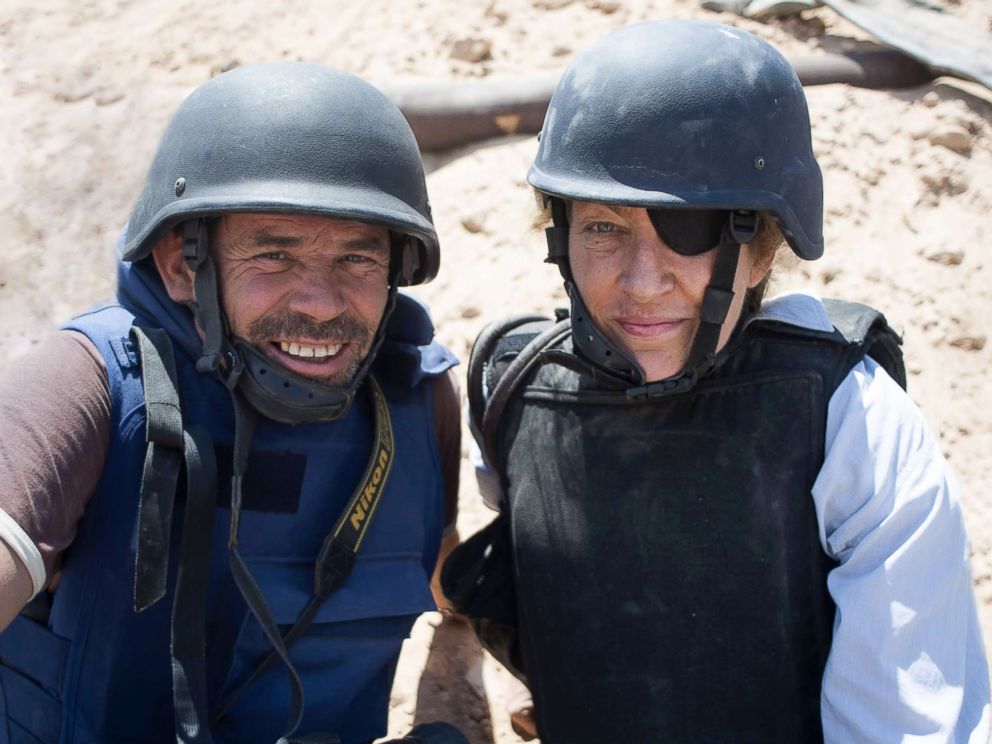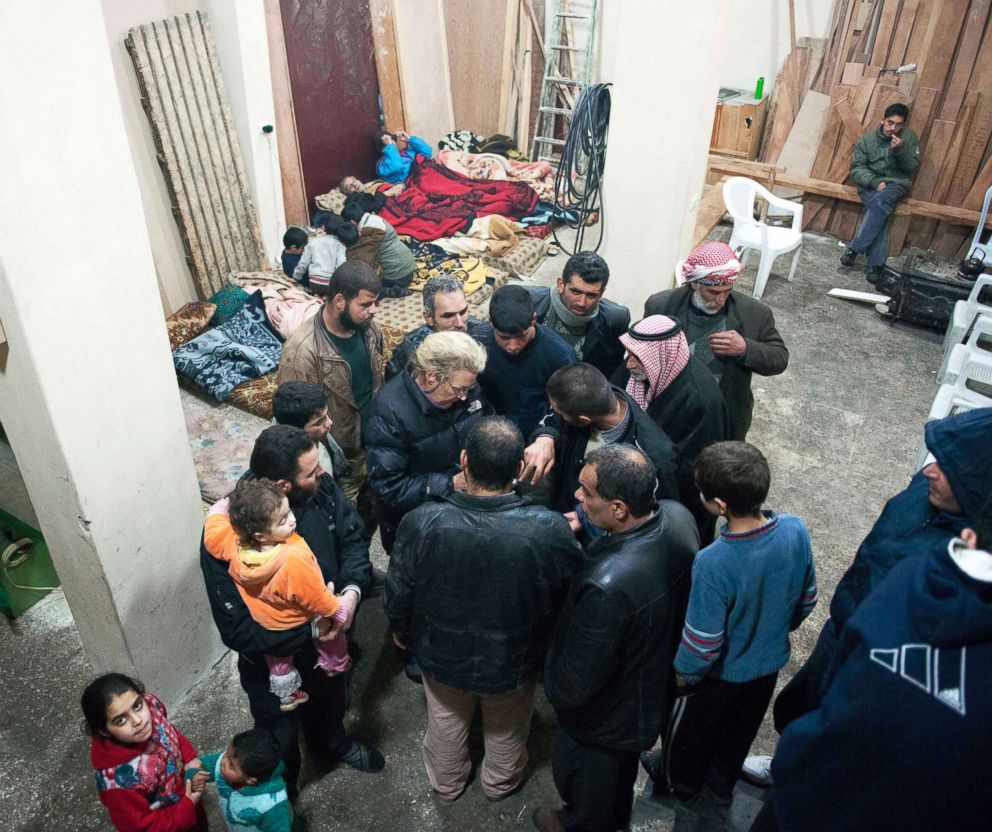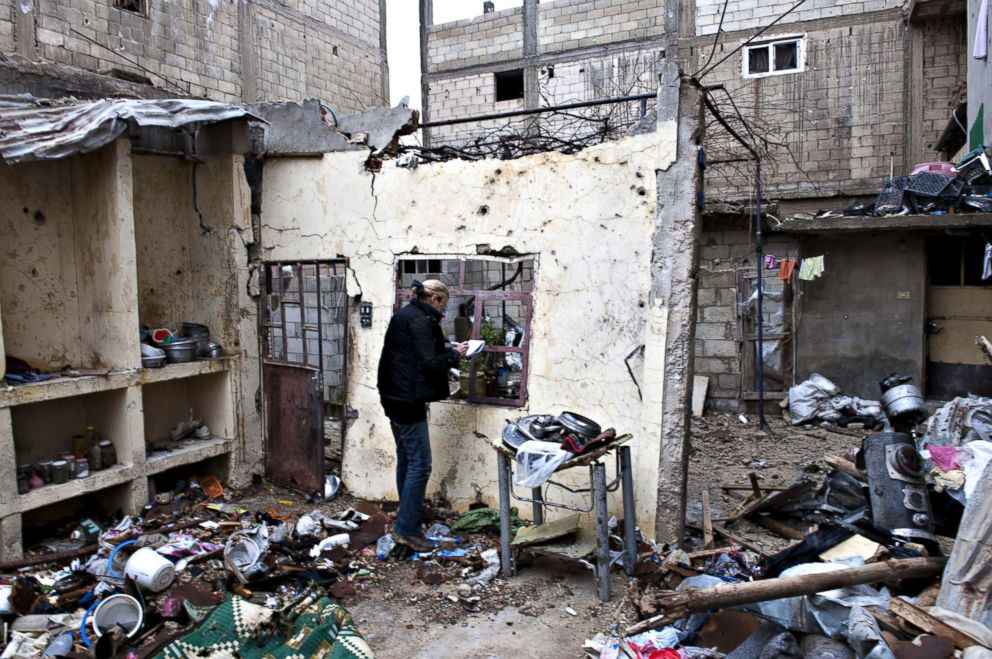'Under the Wire' doc explores life and legacy of journalist killed in Syria airstrike
Marie Colvin spent 30 years reporting from conflict zones. Syria proved deadly.
LONDON -- The documentary film about the life and legacy of renowned American journalist Marie Colvin, "Under the Wire," is set to premiere in Britain on Friday. Colvin was killed in 2012 by a Syrian airstrike in the city of Homs after a 30-year career reporting from conflict zones around the world.
Colvin, from Oyster Bay, New York, was appointed Middle East correspondent for the Sunday Times in 1986, and she held the post until her death at 56 years old.
ABC News spoke to the British photojournalist Paul Conroy, a long-time friend and colleague of Colvin's. He had accompanied Colvin to Syria in 2012, and was injured by the airstrike bomb that killed her.
Conroy described the Syrian conflict, now in its seventh year, as "completely different" from anything they had seen before.
"Even before we arrived, we were told by Lebanese intelligence that if journalists were caught near Homs, they were to be executed and have their bodies thrown onto the battlefield," he said.

Colvin and Conroy first met while covering the Iraq war in 2003, after Conroy had failed to smuggle himself across the Tigris river on a makeshift boat. The escapade alienated the other journalists who were there, but the famously tough Colvin was impressed by the daring feat. “Hey boatman,” she said, “I like your style, can I buy you a whiskey?”
The pair worked together throughout the 2000s — Colvin wrote the features and Conroy took the pictures.
Ultimately, the siege of Homs on February 22, 2012 proved to be deadly for Colvin. "I remember it quite vividly," Conroy said. " I never passed out at any point."
It hadn't even been two weeks since they had arrived, and Bashar al-Assad's forced had tracked their location.

The bombing began at 6 a.m., when they were due to go to the local field hospital for an assignment. The air strike used a tactic known as “bracketeering," where a sustained missile attack starts wide of the target and then closes in.
It was the last rocket that killed Colvin. She died instantly, along with accompanying French photographer Remi Ochlik.
Conroy was extremely lucky to get out alive. The blast blew a hole through his thigh, and he was trapped in the building for four days. After a doctor saved his leg, patching it up with 40 staples, Conroy was able to escape on the back of a rebel motorcycle, which traveled through a 3-kilometer-long tunnel to Lebanon.
"We drove straight through the Assad front lines. A lot of people were killed — about 13," he says.

For Colvin, war reporting was a lifetime commitment for which she paid the highest price. "These are people who have no voice," she once said, according to The Guardian. "If journalists have a chance to save their lives, they should do so."
This week Syrian forces are closing in on the final rebel stronghold, Idlib. People on the ground believe that a full frontal assault could prove to be the civil war's deadliest, in a conflict that has already taken over 350,000 lives.
“She died telling the story of the people of Homs and what was being done to them,” said Conroy. “In an age of fake news, it’s good for people to see some real news and the facts that go behind getting these stories out.”
Early reviews for the film, which is scheduled for a theatrical run in the U.S. this fall, have been positive. Time Out Magazine described "Under the Wire" as “urgent” and “riveting," especially considering the current situation in Idlib.




